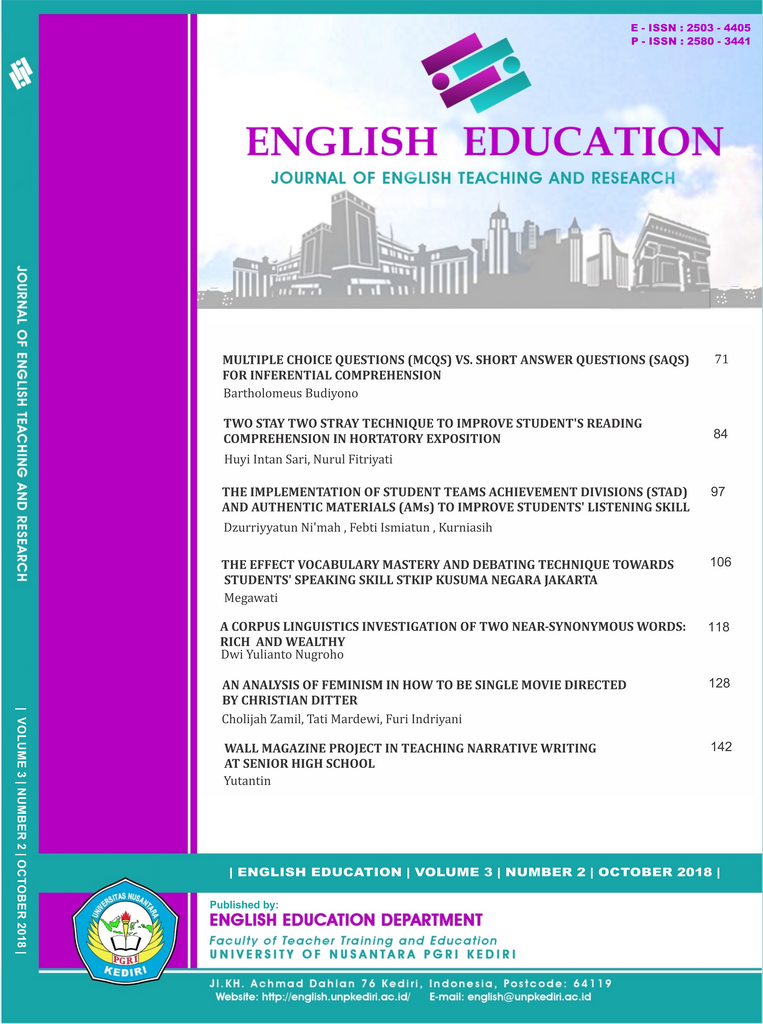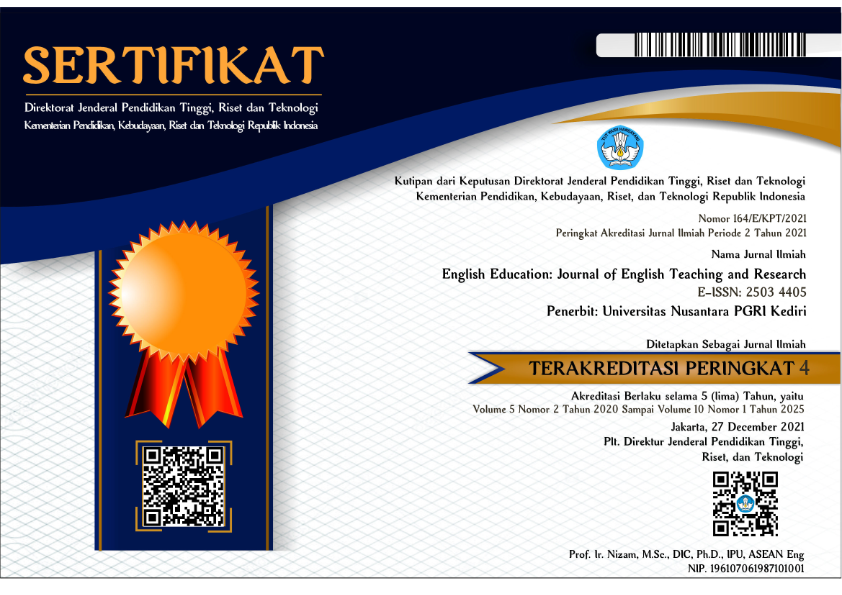TWO STAY TWO STRAY TECHNIQUE TO IMPROVE STUDENT’S READING COMPREHENSION IN HORTATORY EXPOSITION
DOI:
https://doi.org/10.29407/jetar.v3i2.12469Abstract
The objective of this study was to find out the effectiveness of Two Stay Two Stray technique to improve student’s reading comprehension in Hortatory exposition text of the eleventh grade students. This study was conducted under quasi experimental research which belonged to quantitative method. The subject of this research was the eleventh graders of MA Nahdlatul Ulama Demak in the academic year 2016/2017 with a total number of 87 students. The researchers used purposive sampling, and two classes were taken as samples; they were XI IPA 1 as the experimental class and XI IPA 2 as the control class. The research instrument used by the researchers was test. Pre-test and post-test were given to both classes. Pre-test was given to the students of both classes before the treatment was conducted. Post-test was given after the treatment. The results of both tests were calculated to measure the effectiveness of the treatment toward students’ reading achievement. Experimental class was taught by using Two Stay Two Stray (TSTS) technique and control class was taught by using conventional method. T-test was applied to calculate the data. The result of T-test showed that the post-test mean score of control class was 66.61 and experimental class was 78.10. T-test calculation showed that there was a significant difference in the mean score of the both classes. It was indicated by result of post-test in experimental class was sig. (2-tailed) 0.000 < 0.05. It means that H1 was accepted. It can be concluded that teaching hortatory exposition text with Two Stay Two Stray (TSTS) technique was effective to improve student’s reading comprehension in Hortatory exposition text.
Keywords: Two Stay Two Stray (TSTS), Hortatory Exposition Text, and Reading Comprehension
Downloads
Downloads
Published
Issue
Section
License
Authors who publish with this journal agree to the following terms:
- Copyright on any article is retained by the author(s).
- The author grants the journal, the right of first publication with the work simultaneously licensed under a Creative Commons Attribution License that allows others to share the work with an acknowledgment of the work’s authorship and initial publication in this journal.
- Authors are able to enter into separate, additional contractual arrangements for the non-exclusive distribution of the journal’s published version of the work (e.g., post it to an institutional repository or publish it in a book), with an acknowledgment of its initial publication in this journal.
- Authors are permitted and encouraged to post their work online (e.g., in institutional repositories or on their website) prior to and during the submission process, as it can lead to productive exchanges, as well as earlier and greater citation of published work.
- The article and any associated published material is distributed under the Creative Commons Attribution-ShareAlike 4.0 International License








 Article template
Article template



